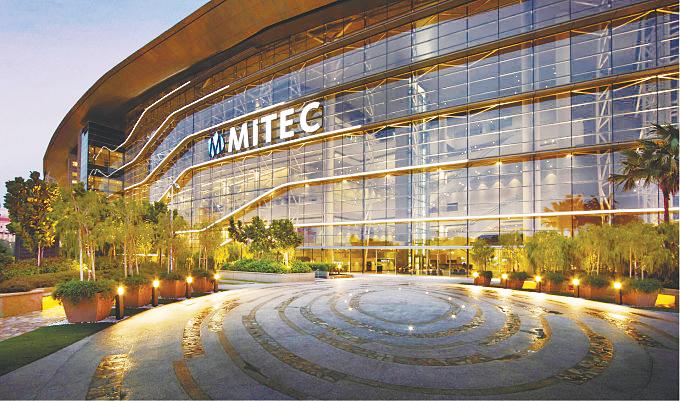IN the not-so-distant past, the term “conference” would summon images of fluorescent-lit ballrooms, with stiff chairs and a parade of PowerPoint presentations.
However, that image is quickly being replaced by something more flexible, immersive and forward-thinking.
Now, the world, including Malaysia, is witnessing a transformation in how conferences and meetings are conceptualised and conducted, where modern and sophisticated spaces are dedicated to events. Welcome to the new evolution of conference spaces.
Hybrid event revolution
The most significant shift came in the wake of the Covid-19 pandemic. Conferences and meetings, usually held face-to-face, were forced to go virtual during that time.
As a result, virtual events evolved into a strategic advantage for many event planners. Hybrid meetings, where physical and virtual participants interact seamlessly, have become the new norm. These formats are not just about convenience but also for enabling the broader participation of individuals across borders, time zones and industries.
For example, now a CEO in Kuala Lumpur can keynote a summit in New York without even boarding a plane. For event planners, this means finding and designing spaces with built-in
fast streaming capabilities, multiple camera angles, computer-generated capabilities and interactive virtual platforms.
Modern conference venues are no longer stuck with stiff, fixed or stagnant layouts. Today’s meeting rooms are designed to be flexible and furnishings are easily detachable. That means a large space used for a main session can quickly be turned into smaller discussion areas within minutes.
The furniture can be moved around easily and often comes with built-in technology.
Some places even have walls that can fold away and seats that can be tucked in, so a lecture hall can quickly become a space for group workshops.
In Malaysia, places like the Malaysia International Trade and Exhibition Centre (Mitec) and upgraded hotels around the Klang Valley are jumping on this trend.
They are putting effort into building smart, flexible spaces. This not only meets the changing needs of event organisers but also puts Malaysia on the map as a leader in modern, world-class conference venues.
Technology at the core
Technology is no longer just an add-on; it has now become the heart of the meeting experience.
Contactless check-ins, AI-driven translation tools, holographic speakers, voice-activated event assistant and VR-enhanced product demos are just some of the tools now being used to elevate the attendee experience.
Mobile apps help attendees manage their schedules, network with others and even order food or transport.
Event platforms are designed to allow organisers to gather real-time feedback, so that they can analyse attendees’ behaviour and personalise the event content delivery. In short, smart tech is making meetings smarter and much easier.
Prioritising health, safety and wellness
Another hallmark of this new evolution in designing a modern conference setting is the heightened attention to health and wellness.
Sanitisation stations, improved ventilation and socially distanced seating have become standard at most venues. But it is not just about safety anymore; it is also about comfort and care towards the attendees present during the event.
In response to the growing emphasis on attendee well-being, more venues are now incorporating holistic wellness elements into their event offerings.
This includes the introduction of dedicated wellness lounges designed for relaxation and recharging, healthier catering menus that focus on balanced, nutritious meals and thoughtfully scheduled wellness activities.
When participants feel mentally alert, physically comfortable and emotionally balanced, they are far more likely to be attentive, participative and engaged throughout the event.
Staging a greener tomorrow
More and more event venues and organisers are making eco-friendly choices, from reducing waste to using energy-efficient lighting and digital tools instead of paper.
Going green is now part of the show. Sustainability is no longer just a nice idea but is also becoming the main act in how events are planned and delivered. Through growing awareness around climate change, there is mounting pressure for the events industry to reduce its carbon footprint.
Some venues now offer “green event” packages that offset carbon emissions, encourage digital handouts and source food locally. This also aligns with ESG (environmental, social and governance) goals that many companies now uphold in this era.
Additionally, event planners or venues encourage participants to bring their own water bottles. They provide water dispensers for attendees to refill their bottles. They also encourage using less paper by requesting online form submissions or providing QR codes for conference registration.
Future-ready mindset
This transformation in meeting and conference spaces is not just about aesthetics; it is about mindset and catering to the unique experiences of attendees.
Organisers and participants are demanding more value, interactivity and relevance, especially after the pandemic. The goal is no longer to simply deliver information but also to create memorable and meaningful experiences, with unique ways to convey ideas.
As we step boldly and competitively into this new era, Malaysia stands at
the brink of something big – a golden opportunity to lead the region in cutting-edge business events.
Through our growing tech ecosystem, world-class creative minds and renowned hospitality, we are perfectly poised to set the standard
for future-forward event experiences across Southeast Asia.
Liyana Shamimi Mohamed Kamil is the head of programme and assistant professor at the Faculty of Hospitality and Tourism, Berjaya University College.
Comments: letters@thesundaily.com









